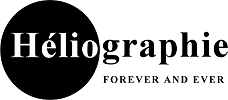In some remote corner of the universe, poured out and glittering in innumerable solar systems, there once was a star on which clever animals invented knowledge. That was the highest and most mendacious minute of “world history” — yet only a minute. After nature had drawn a few breaths the star grew cold, and the clever animals had to die.
Friedrich Nietzsche
Heliography Project 1827-2027
Forever and forever
Heliography for my sons
Dissolve 3 grams of Syrian asphalt in 15 ml of lavender oil. Wait a few days. Apply the emulsion with a brush onto white tin. Let the emulsion dry on a hot cast iron plate for about 20 minutes. Expose the plate to sunlight for two to three days. Rinse off the unhardened asphalt emulsion with turpentine or lavender oil.
Joseph Nicéphore Niépce called this process heliography. He described it in 1829 in his “Notice sur l’Héliographie”. This was the first photographic process in which the image captured by a camera obscura was permanently fixed on a metal plate.
-
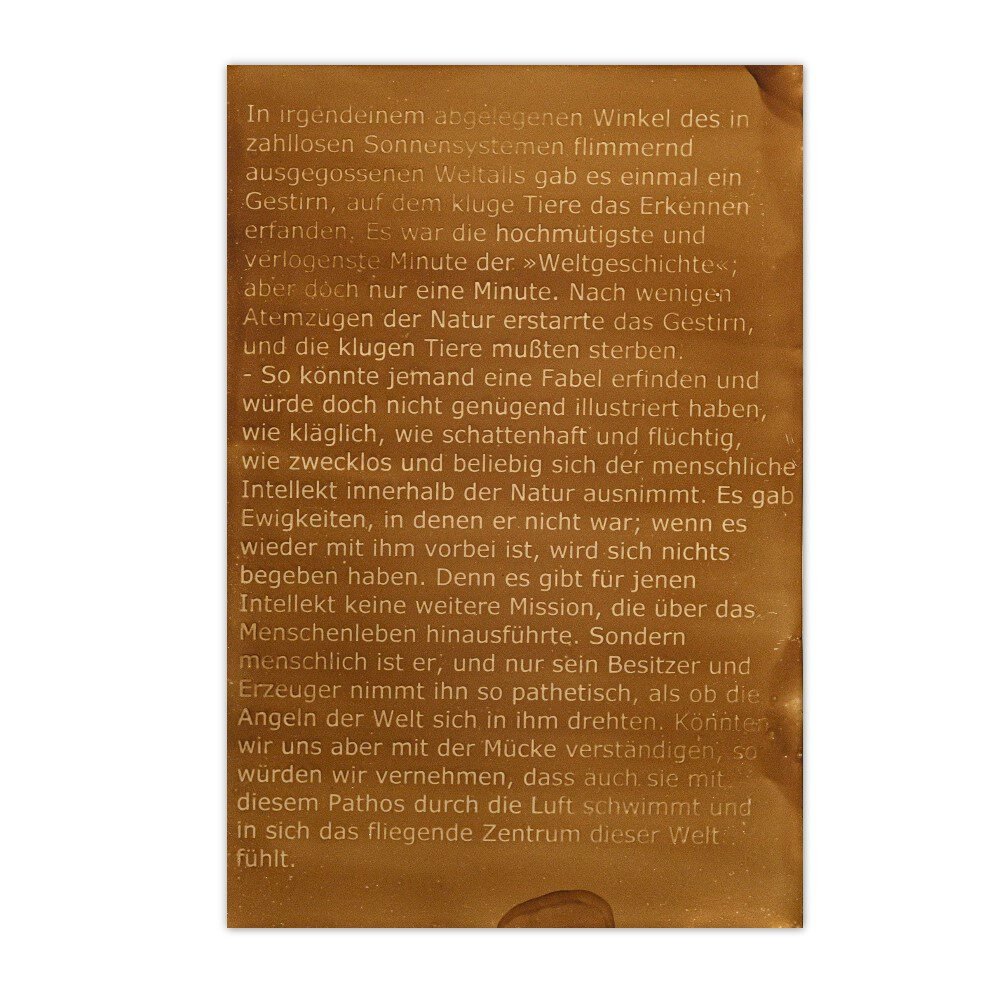
On Truth and Lie in an Extra-Moral (sold out)
-
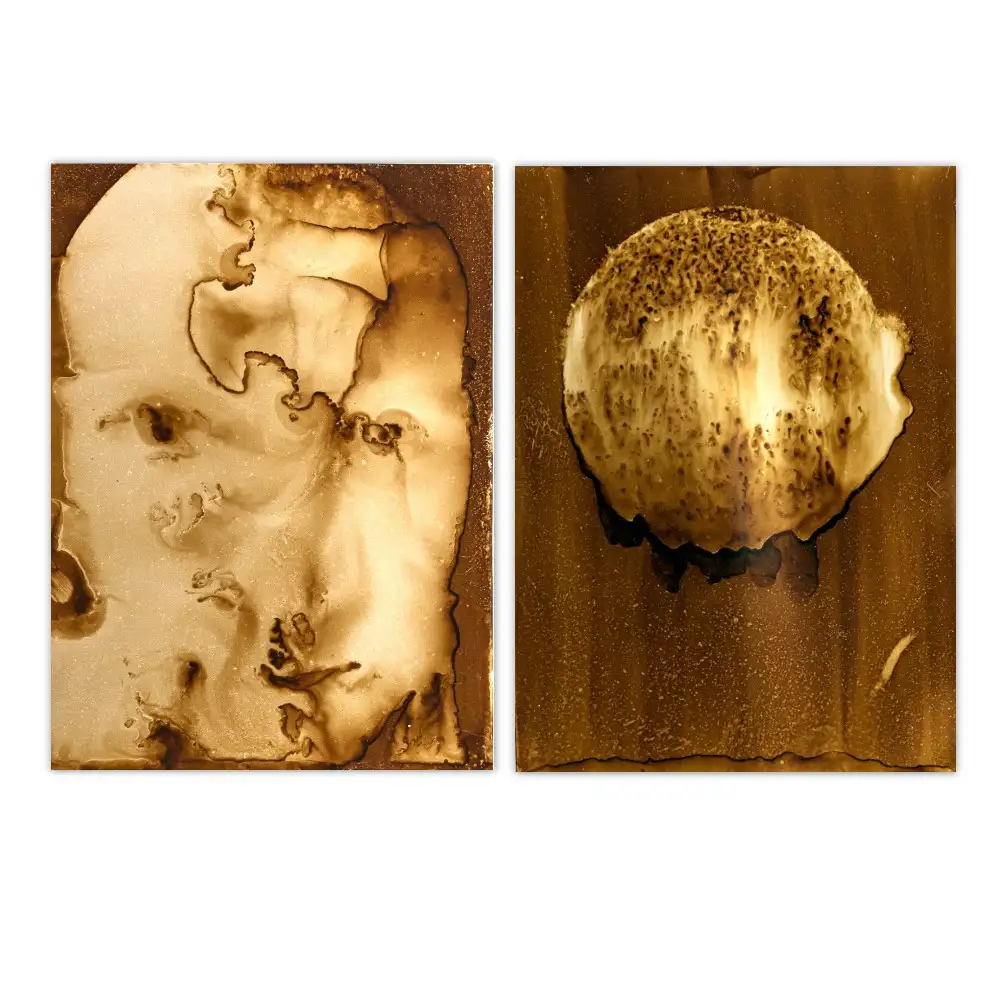
I-Cancer 13.10.2017, Heliography, Unique
900,00 € -
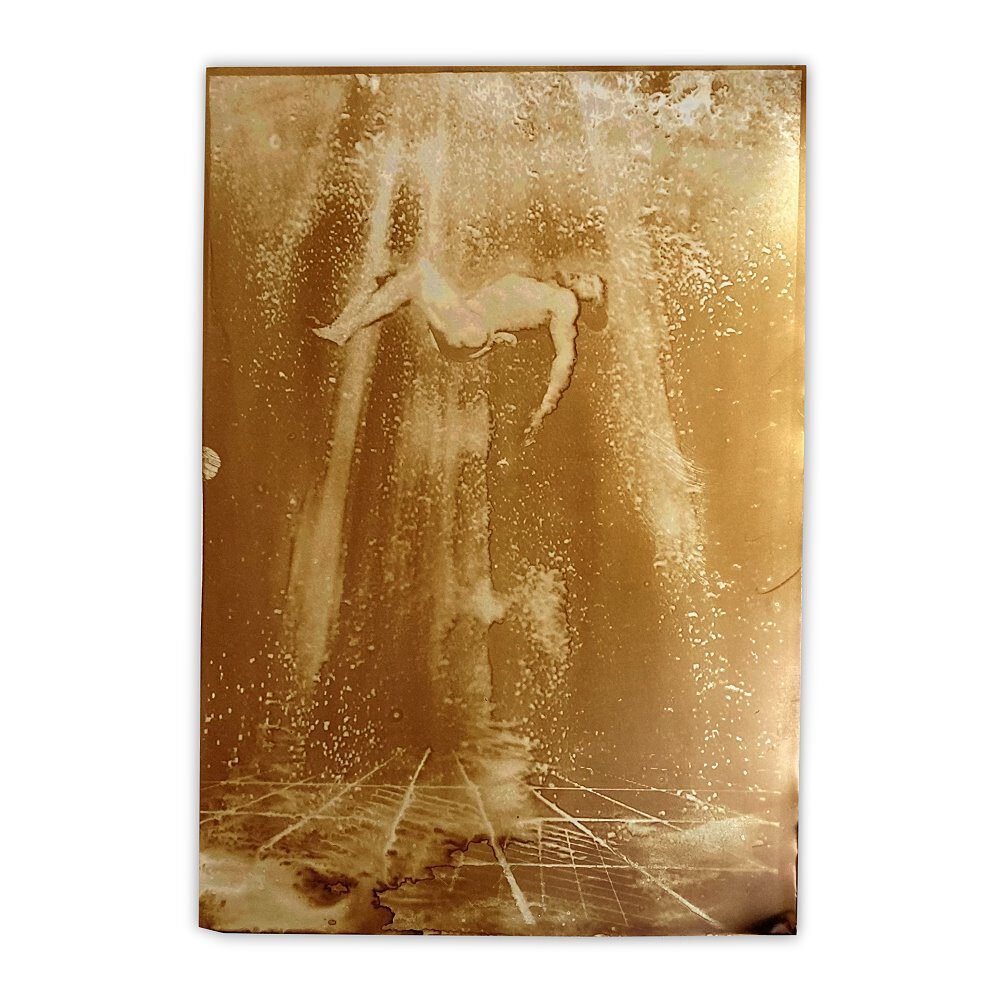
Lazarus
480,00 € -
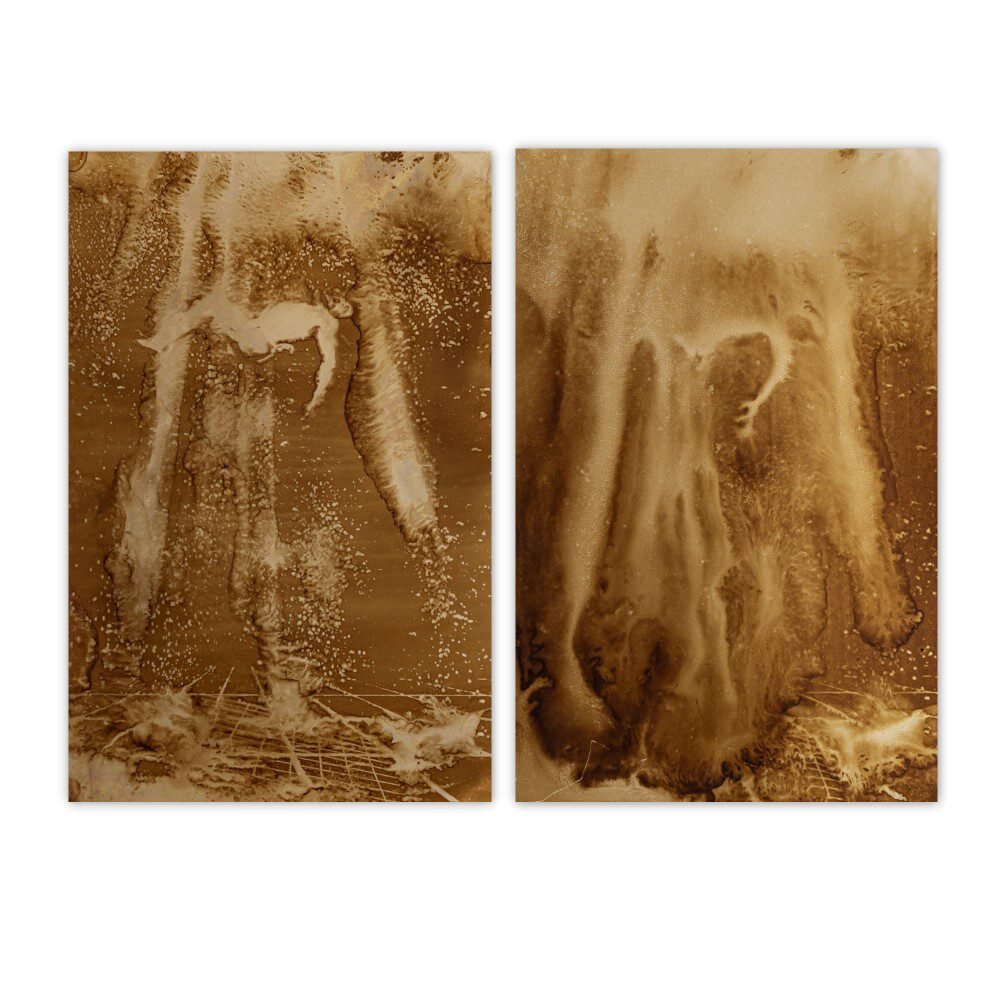
Lazarus and Lazarus
900,00 € -
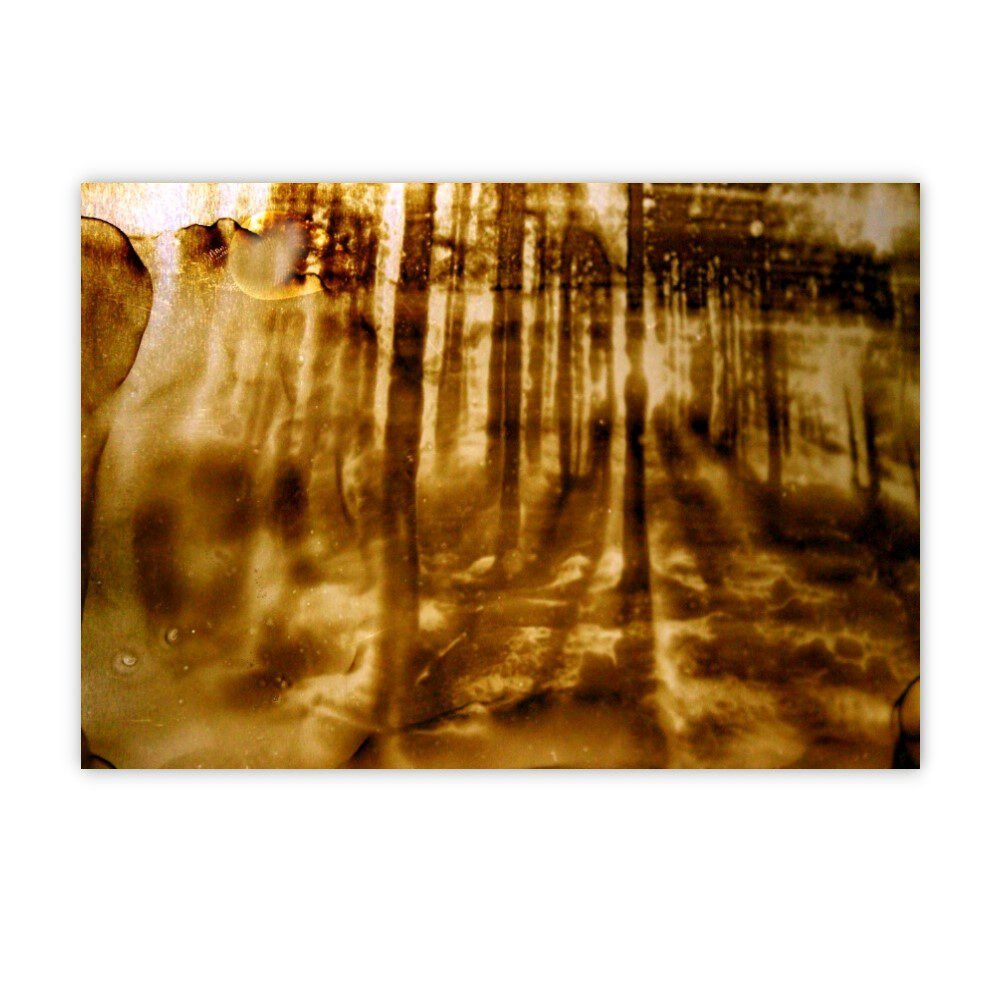
Akt im Wald (Out of Print)
-
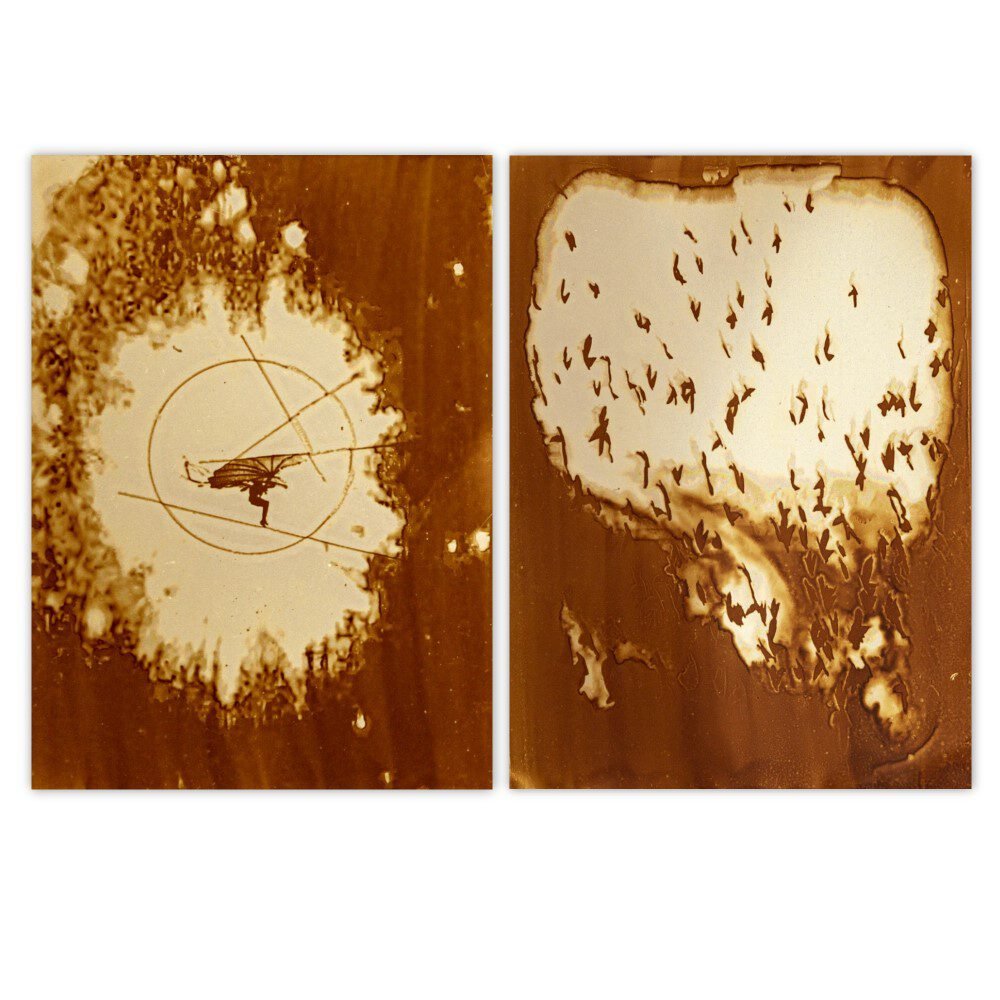
I – Bird
900,00 € -
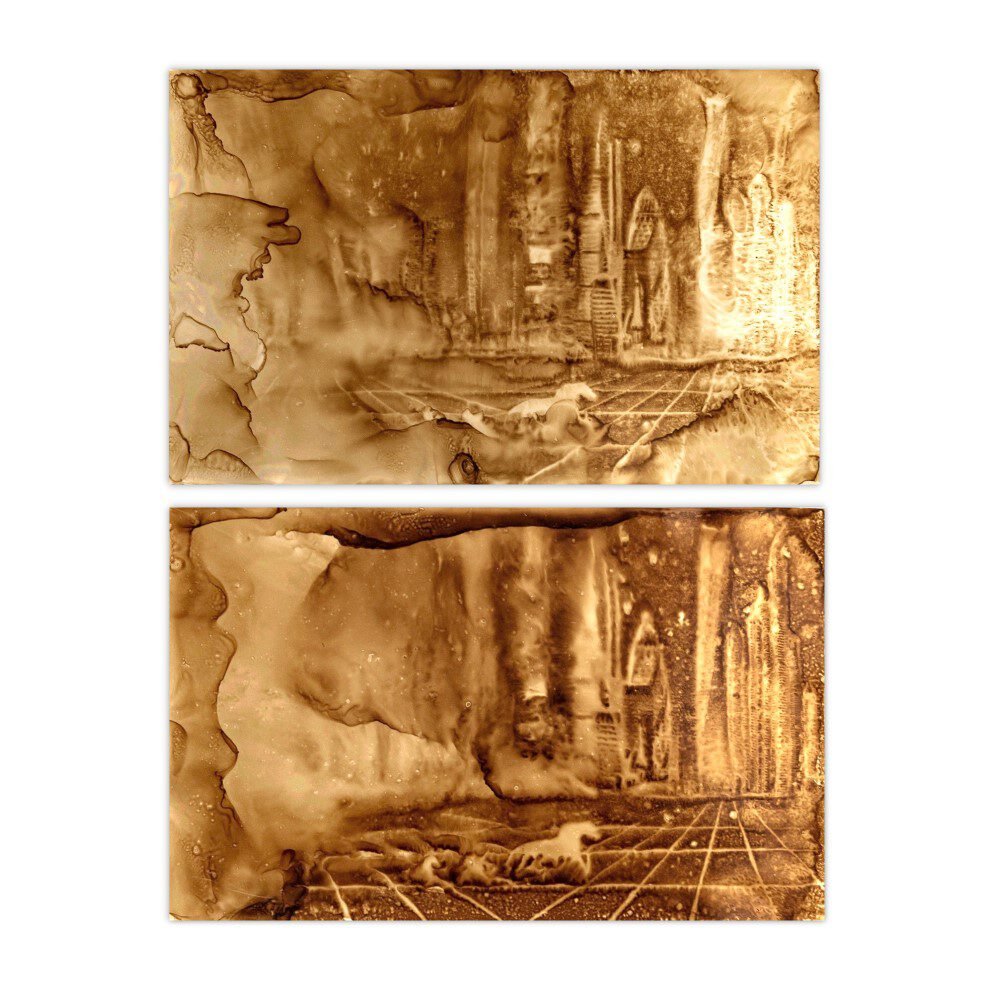
Sleigh Party 1959, Megacity 2029, No 6, No 7
480,00 € -
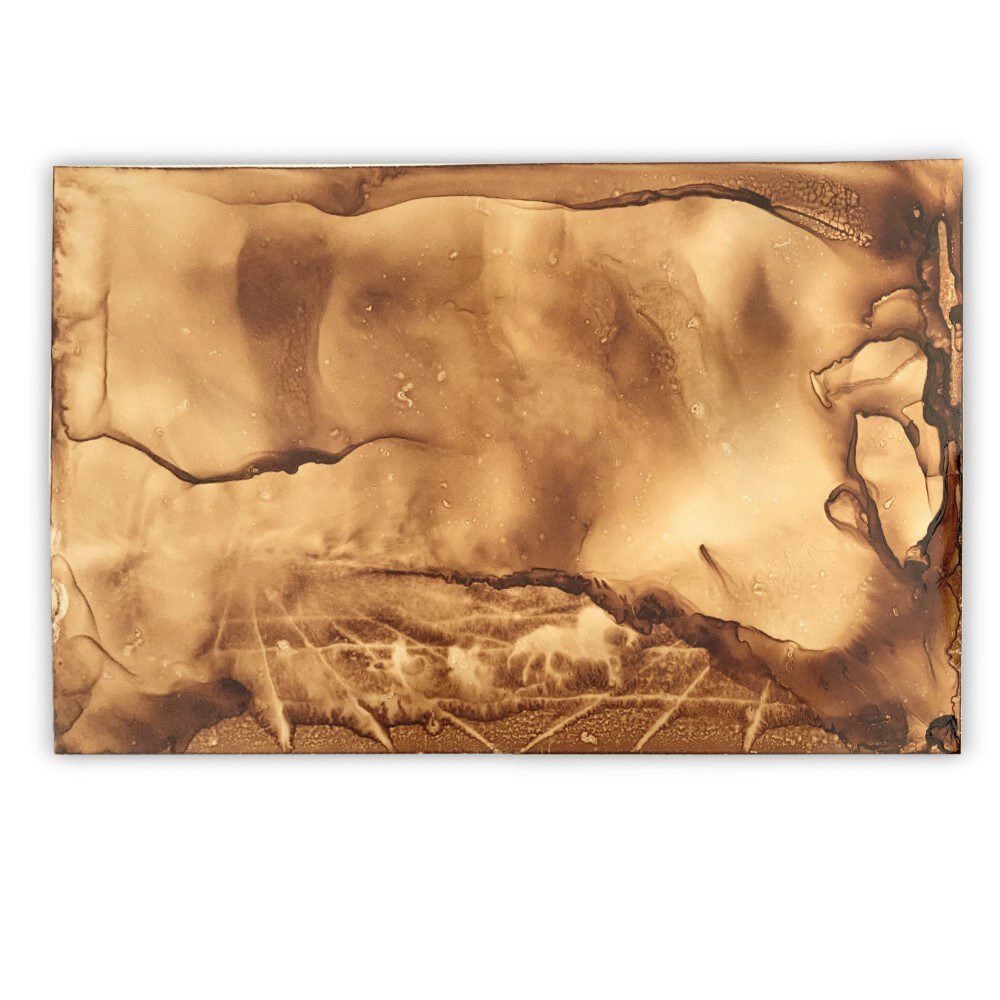
Sleigh Party 1959, Megacity 2029, No 4
480,00 € -
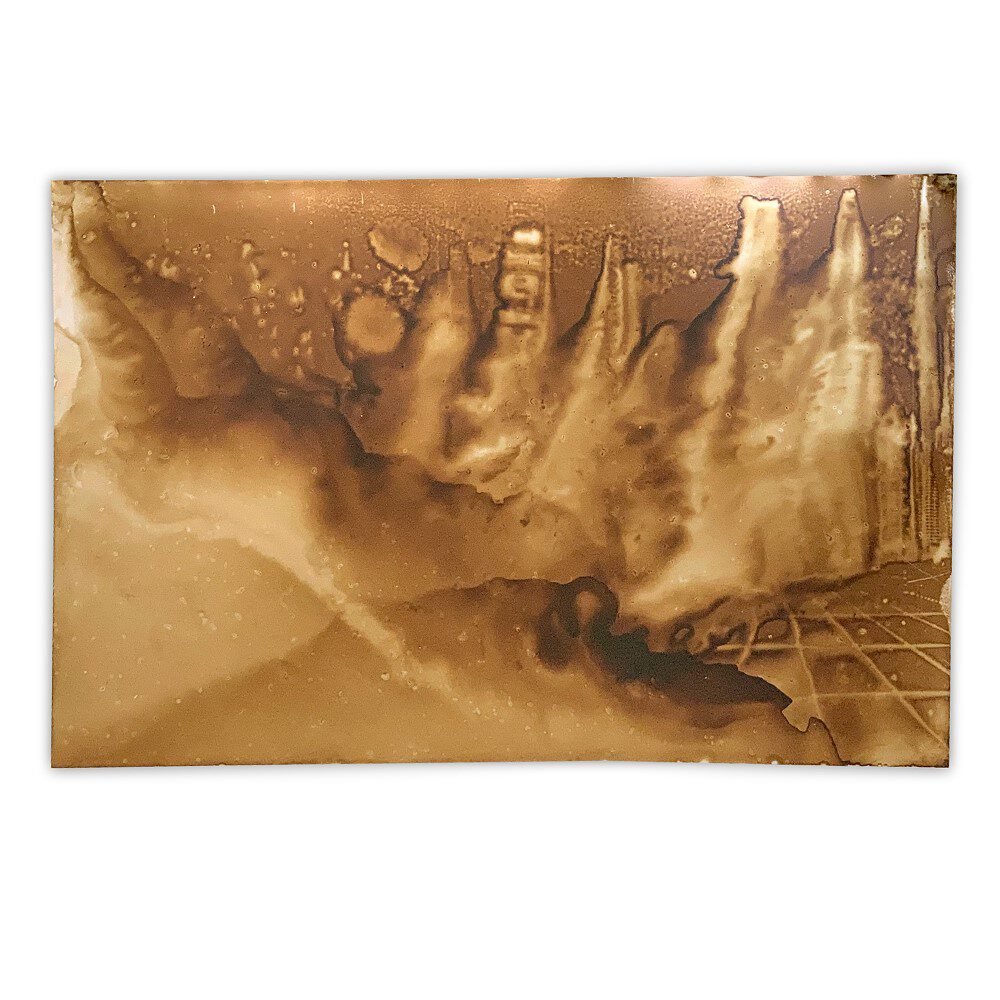
Sleigh Party 1959, Megacity 2029, No 3
480,00 € -
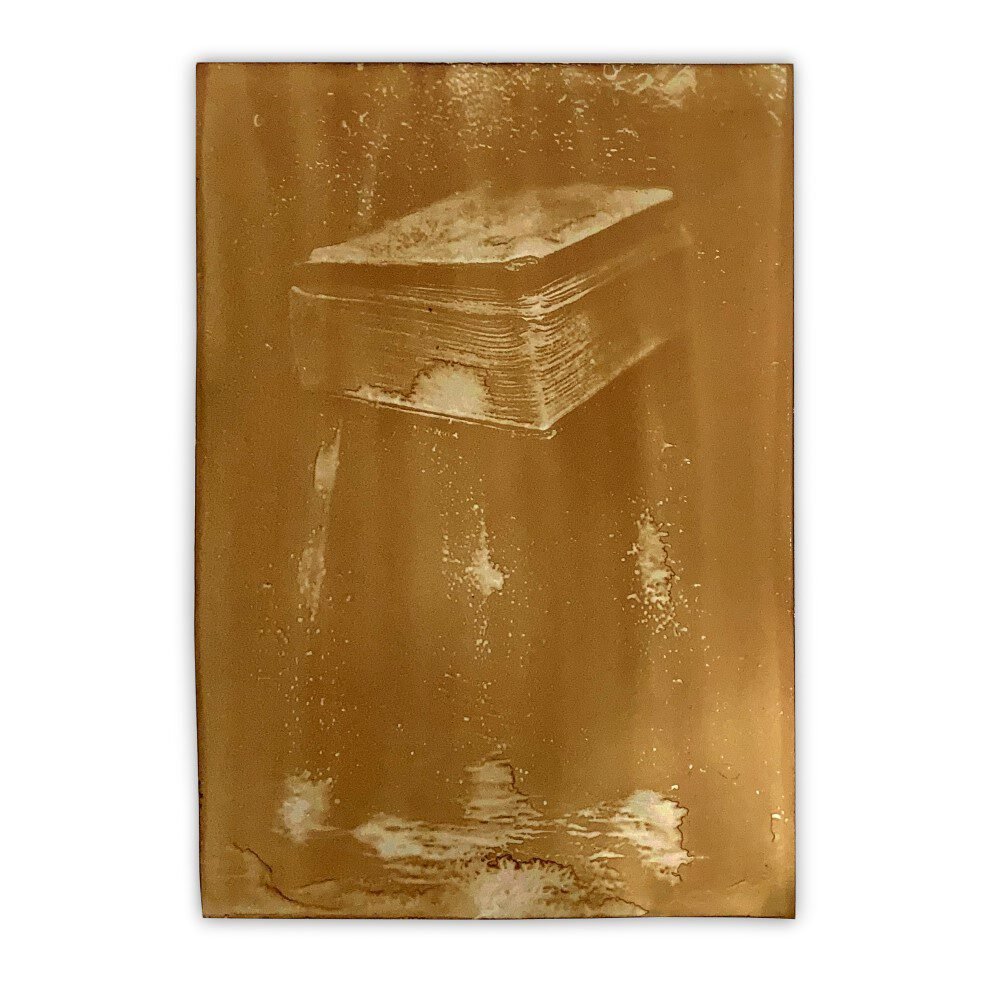
Infinity many Words
480,00 € -
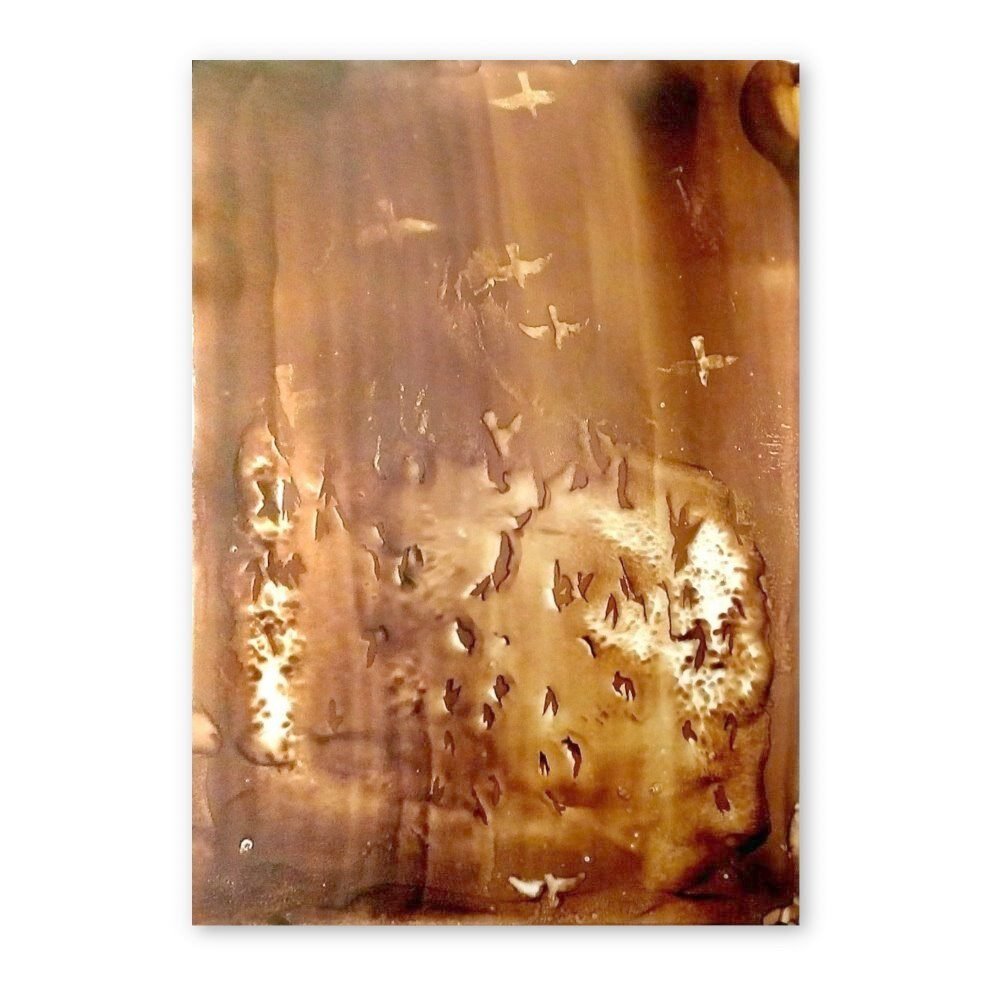
View from my window, 13.10.2017
450,00 € -
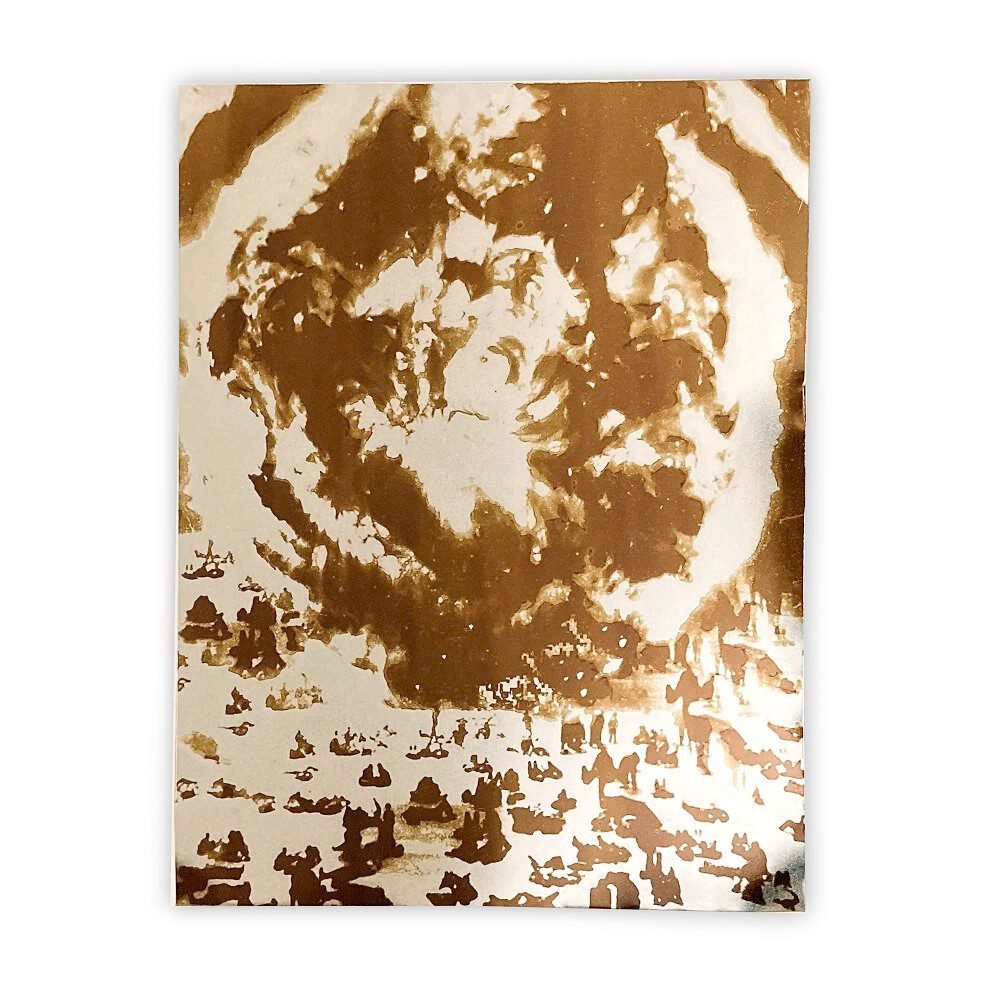
Sunday
350,00 € -
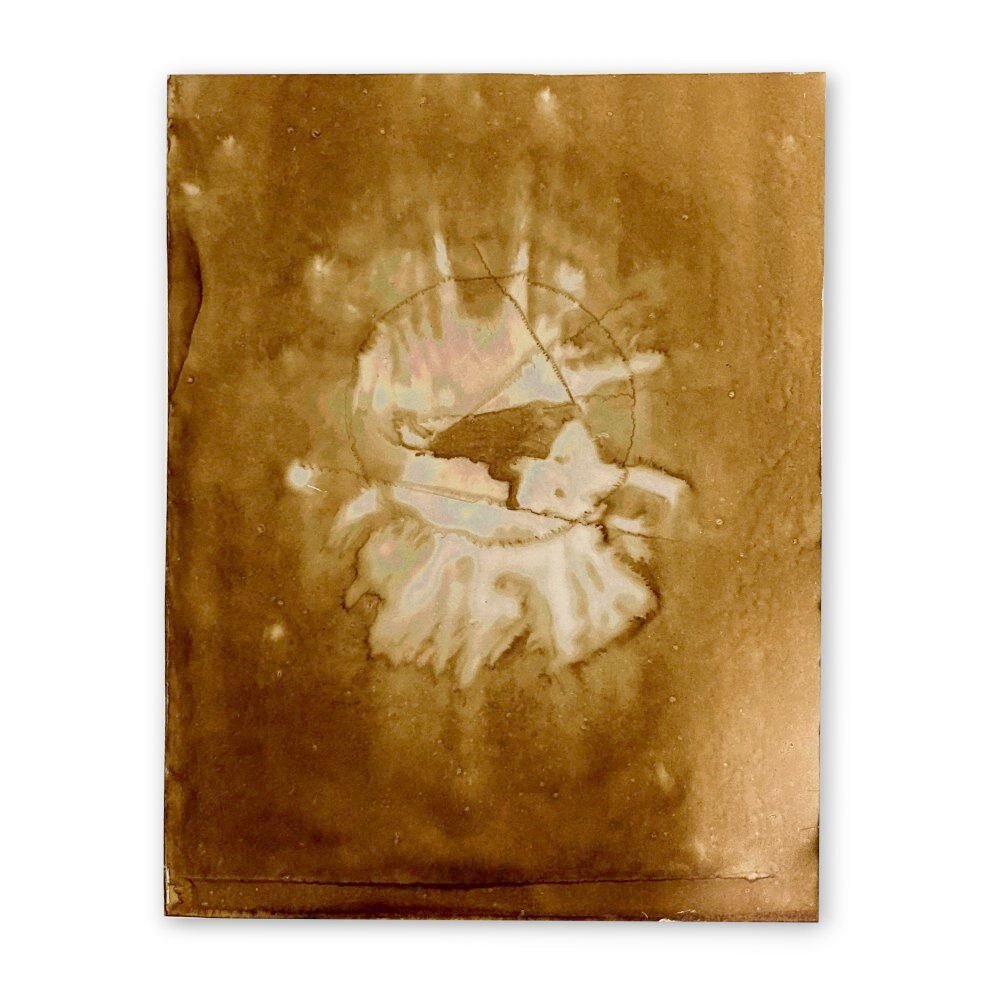
Magic of Trigonometry
350,00 € -
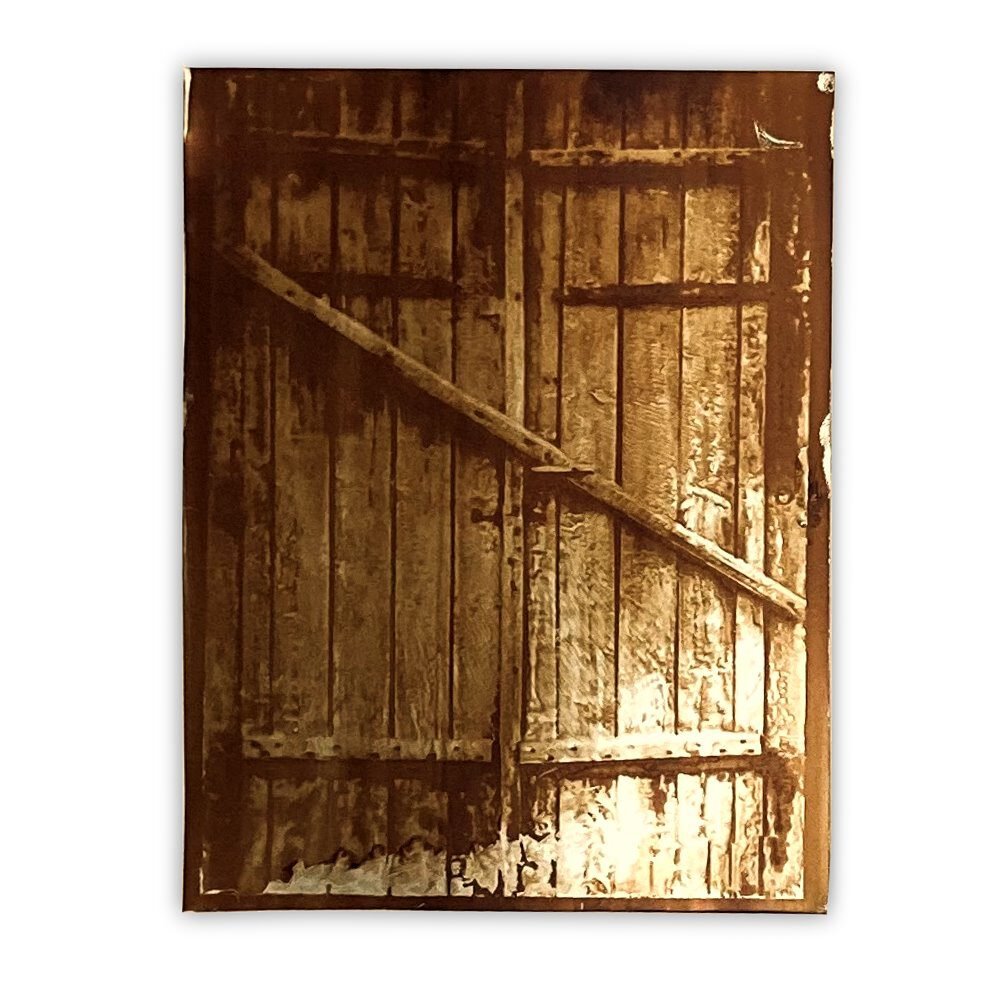
Door
480,00 € -
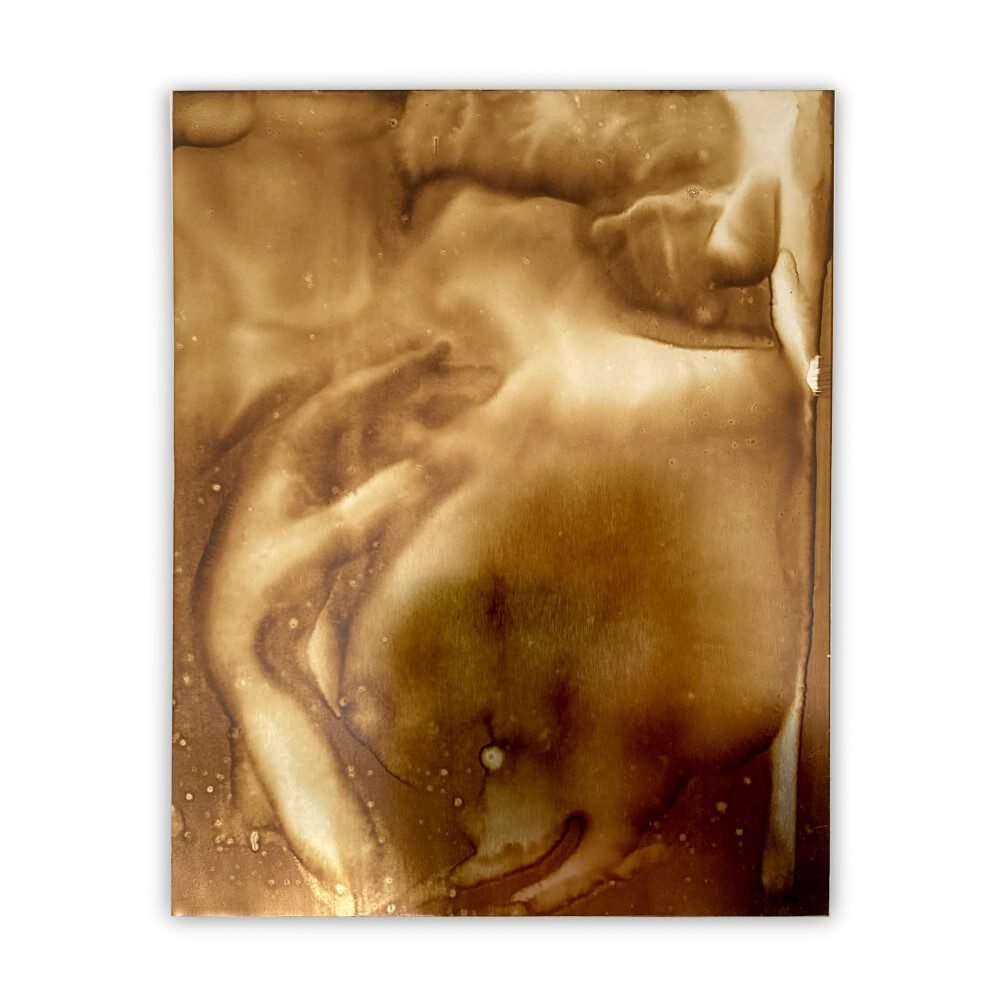
Die Umarmung
1.000,00 € -
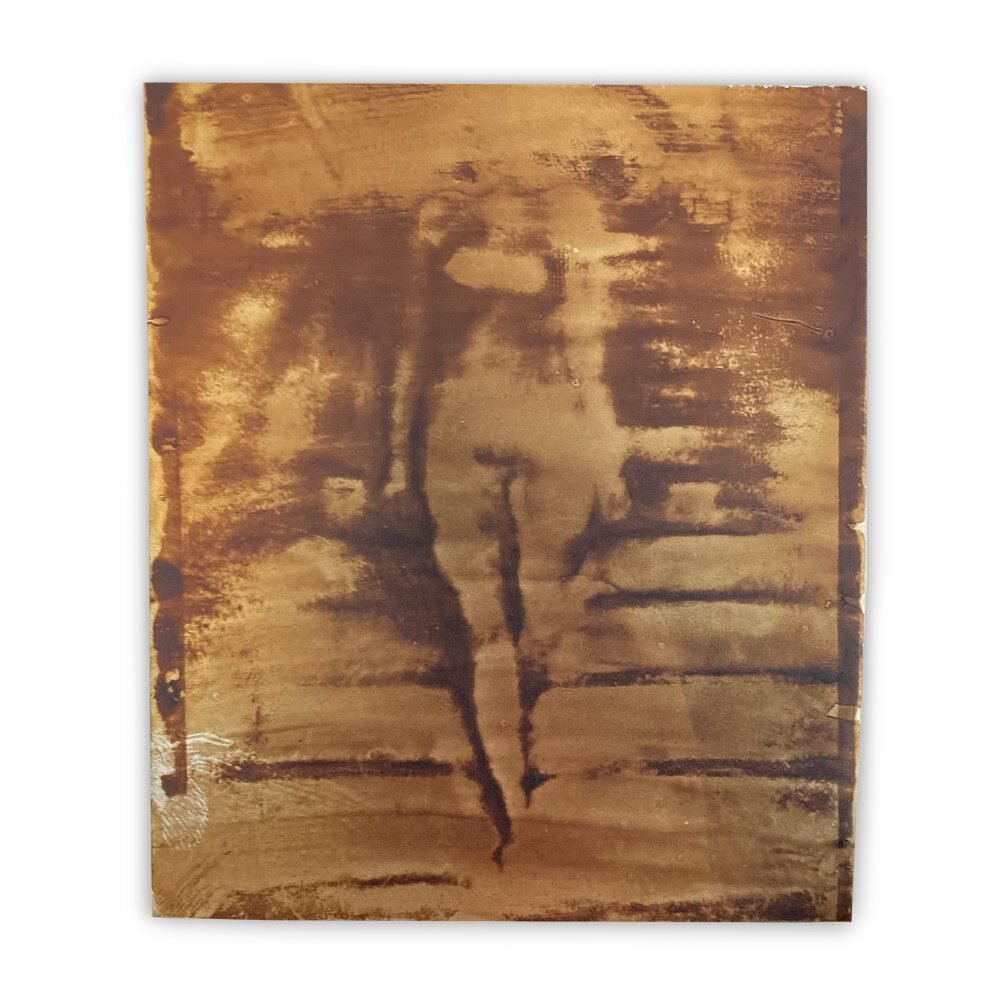
Akt XI
400,00 € -
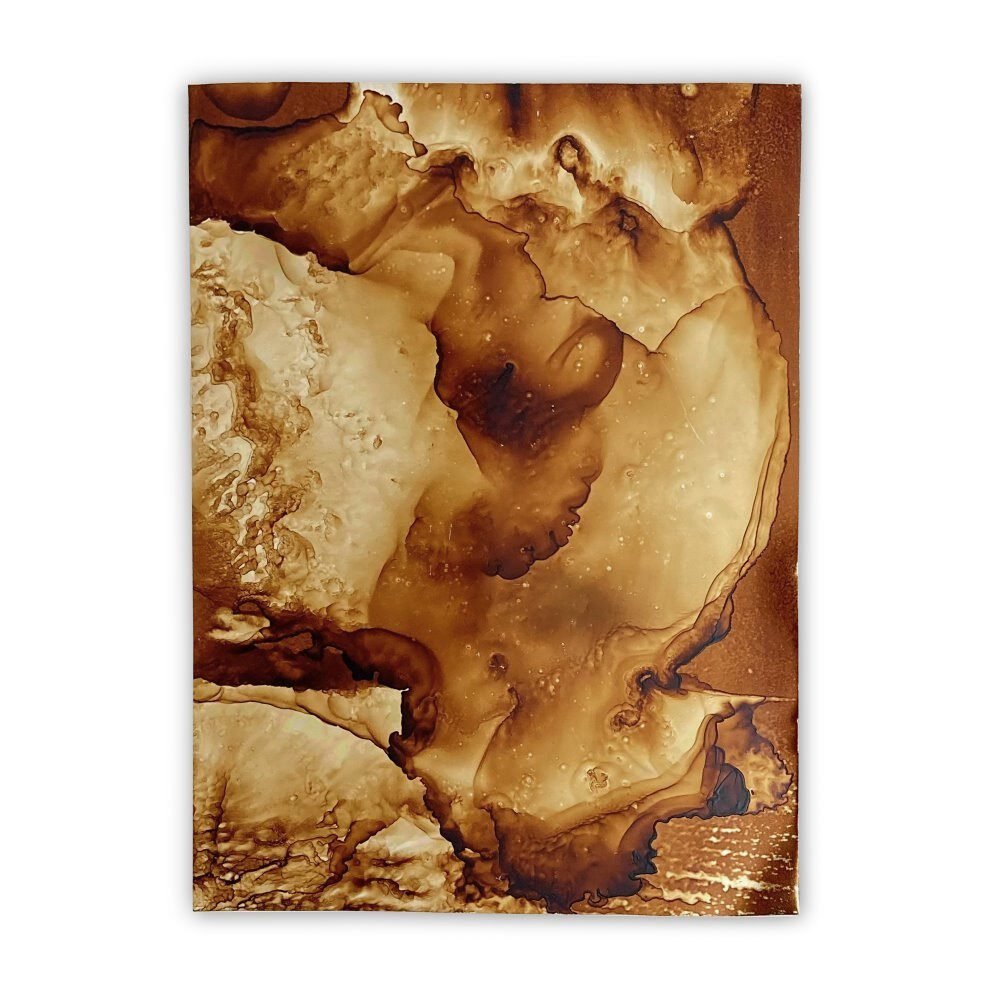
The Afternoon after
350,00 € -
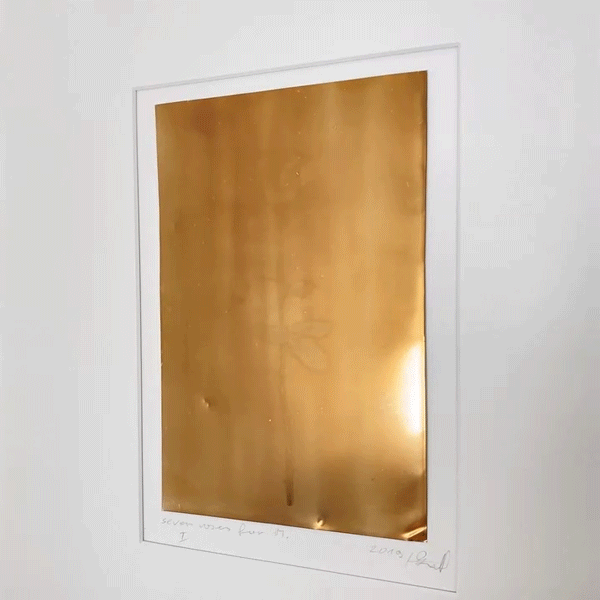
Seven Roses for M. (Out of Print)
-
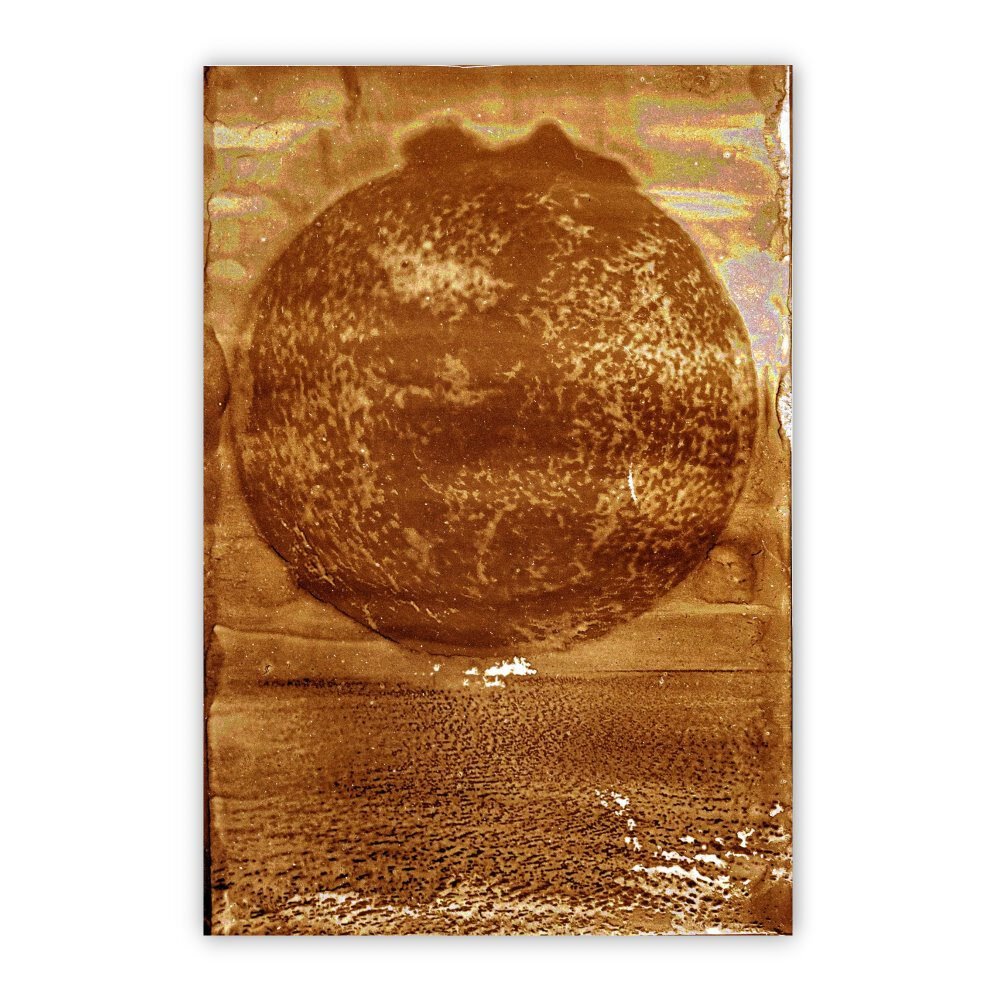
The Sun (Out of Print)
-
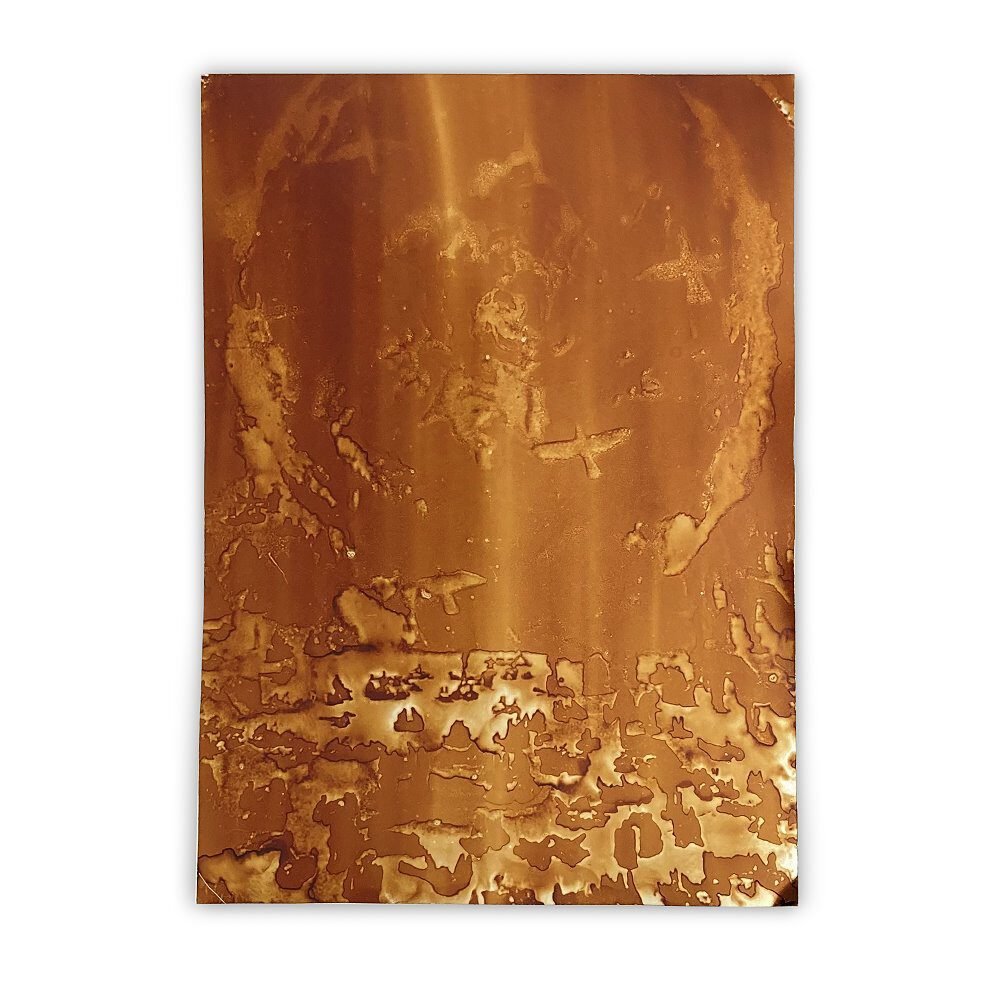
Waiting for Icarus
350,00 € -
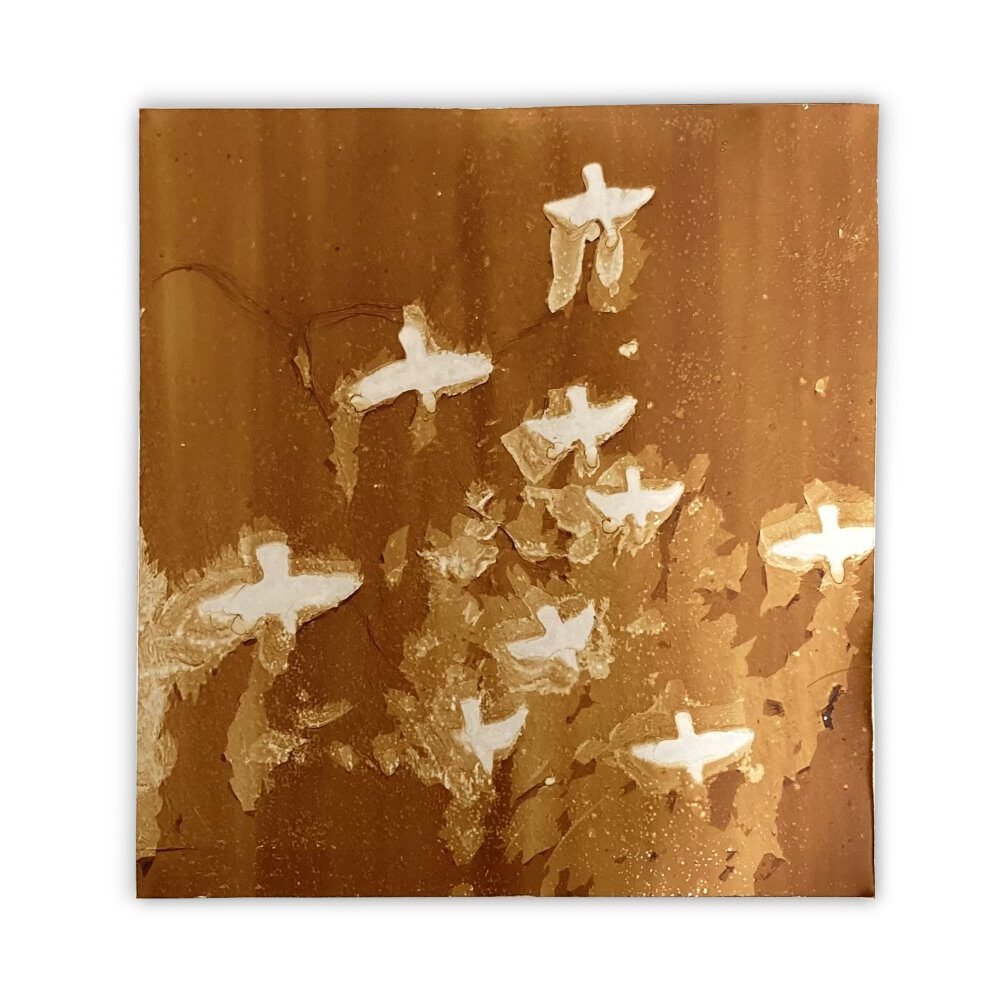
Birds (Out of Print)
-
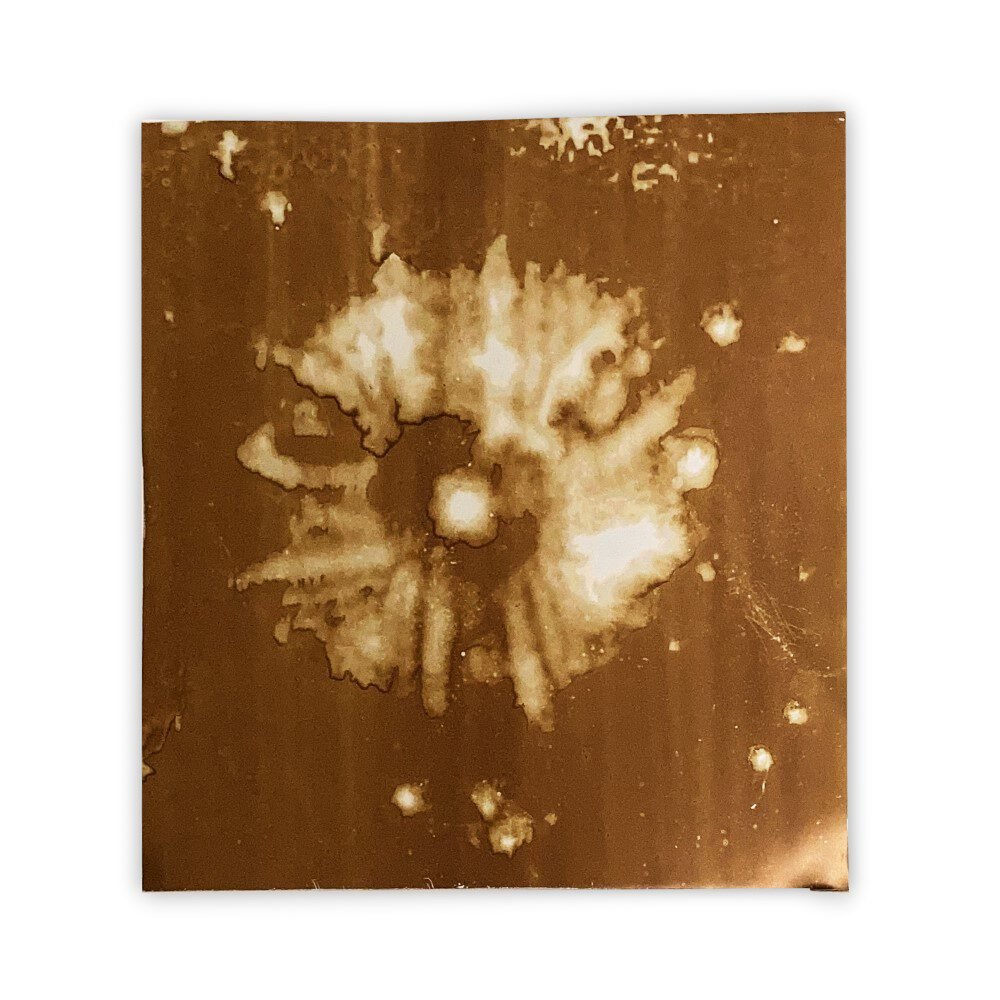
A Little Longer…
350,00 € -
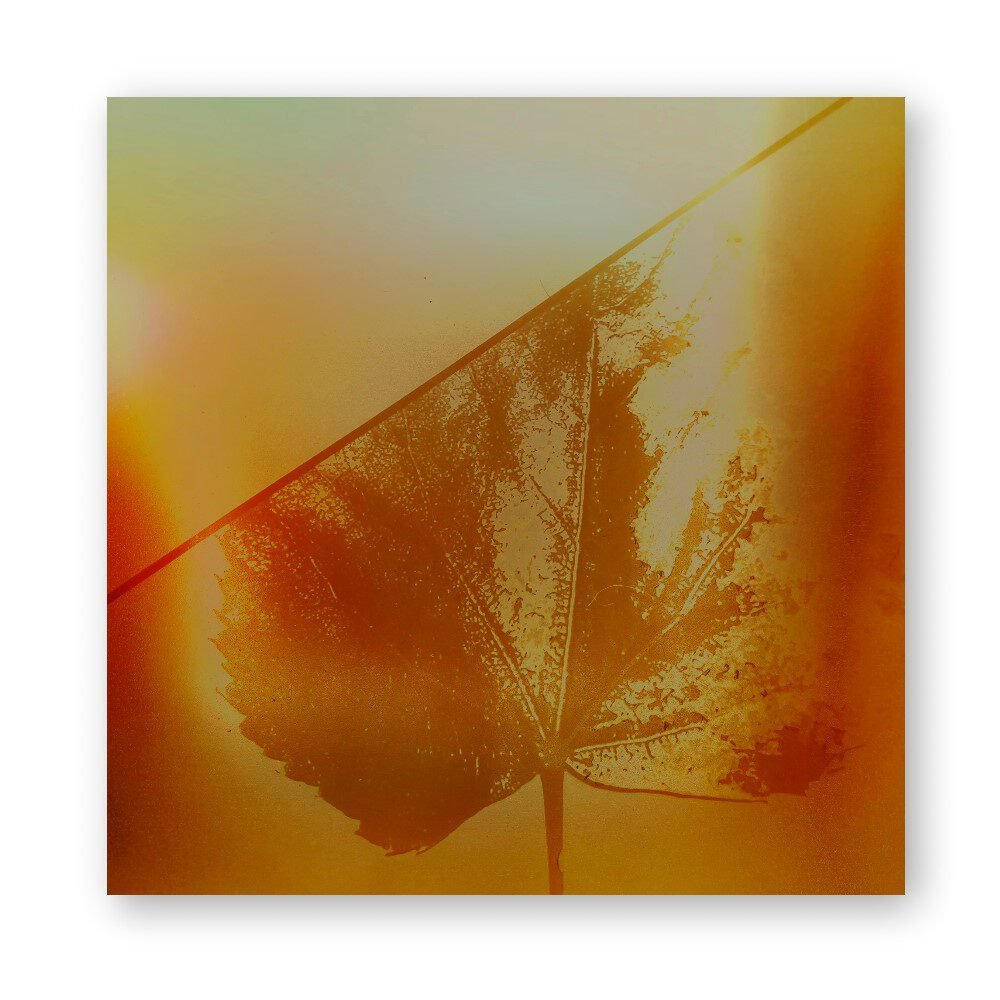
Line and Leaf, 2019 (Out of Print)
-
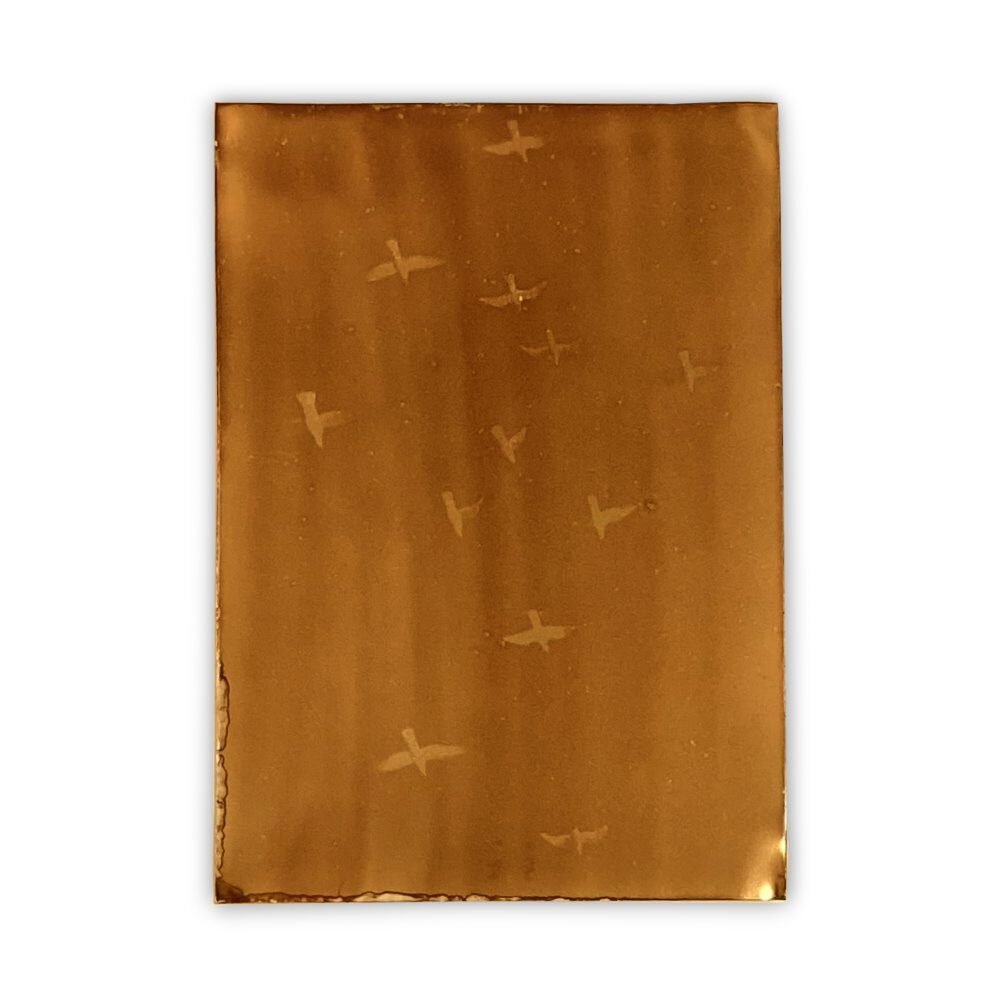
The view from my Window
480,00 €
